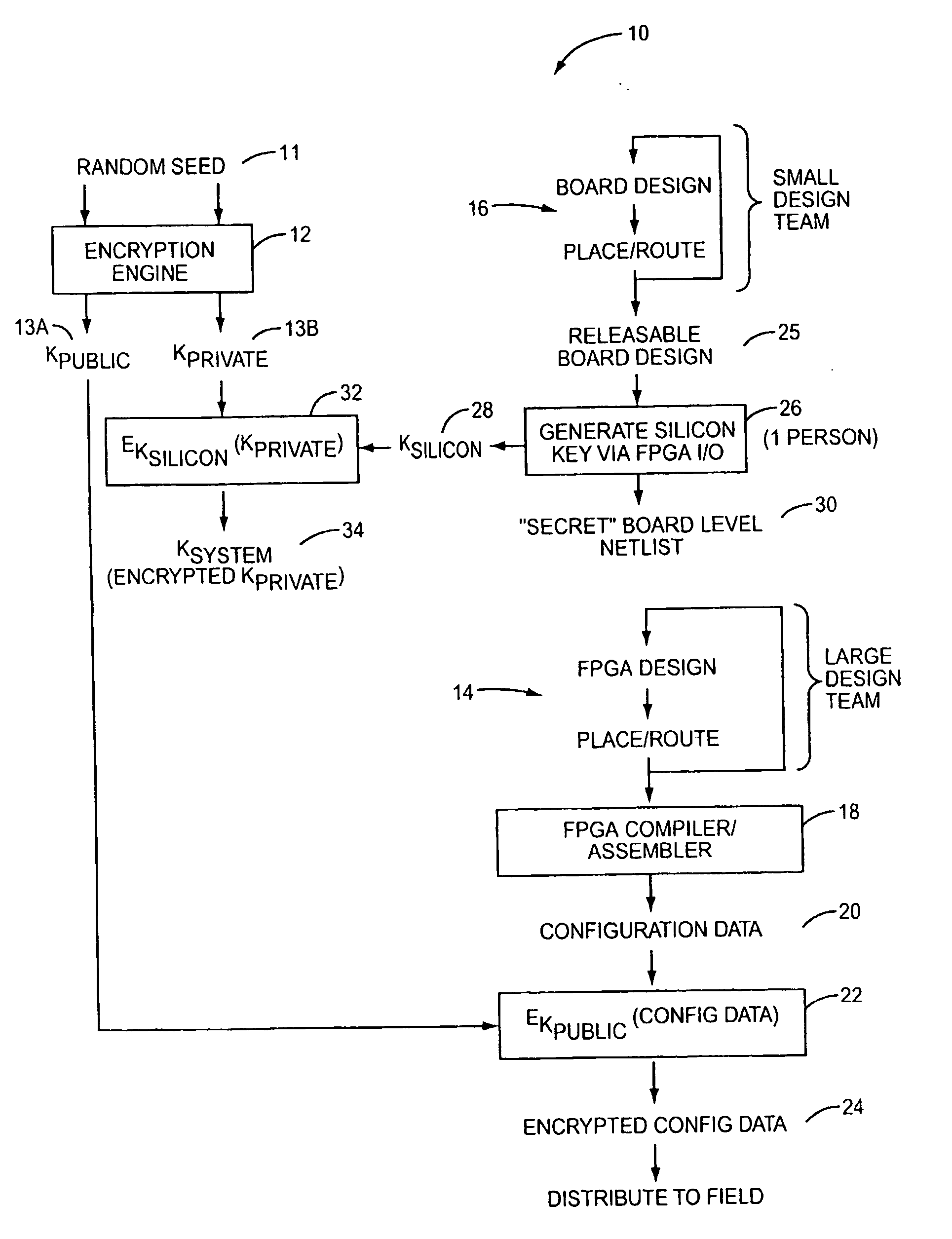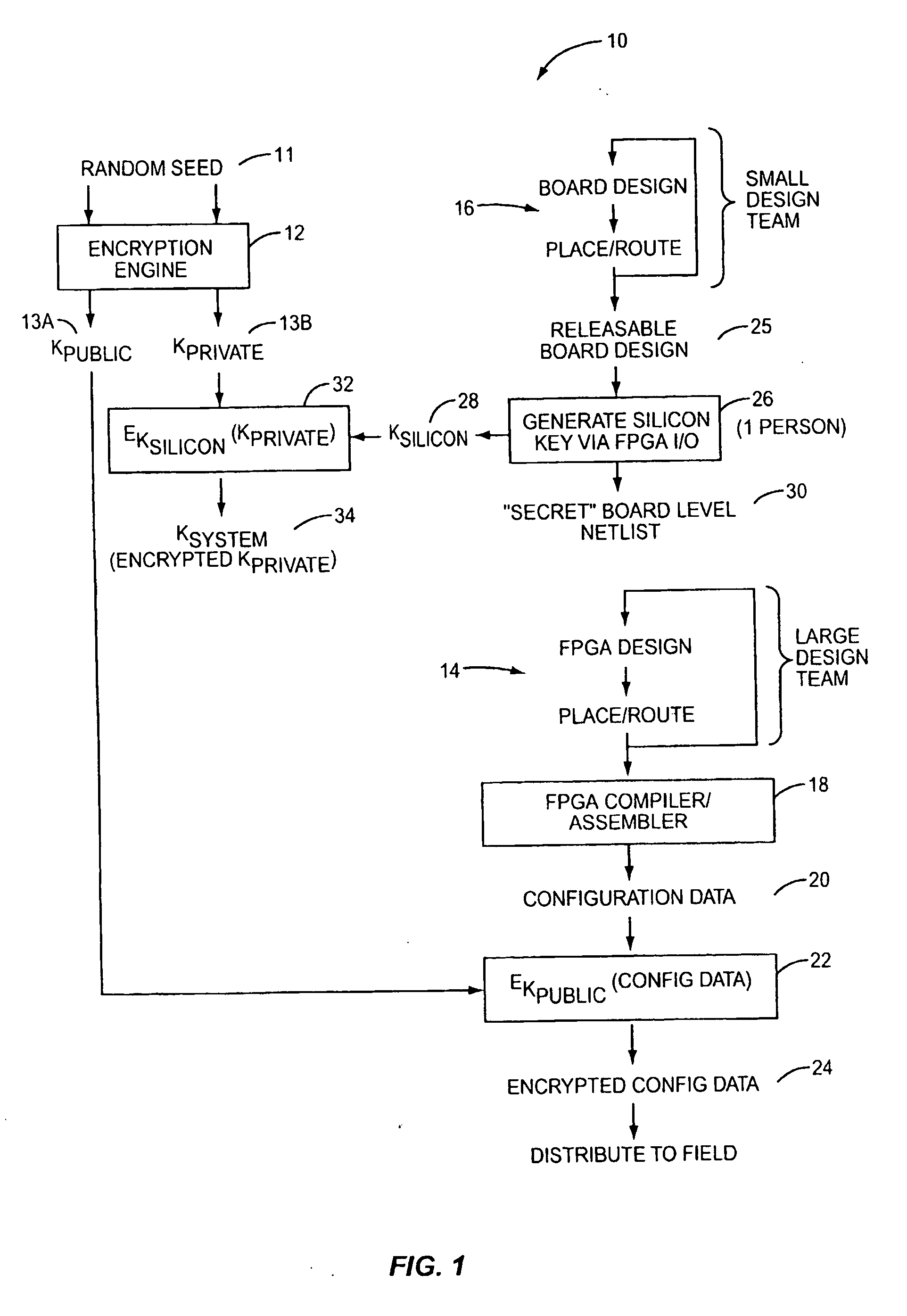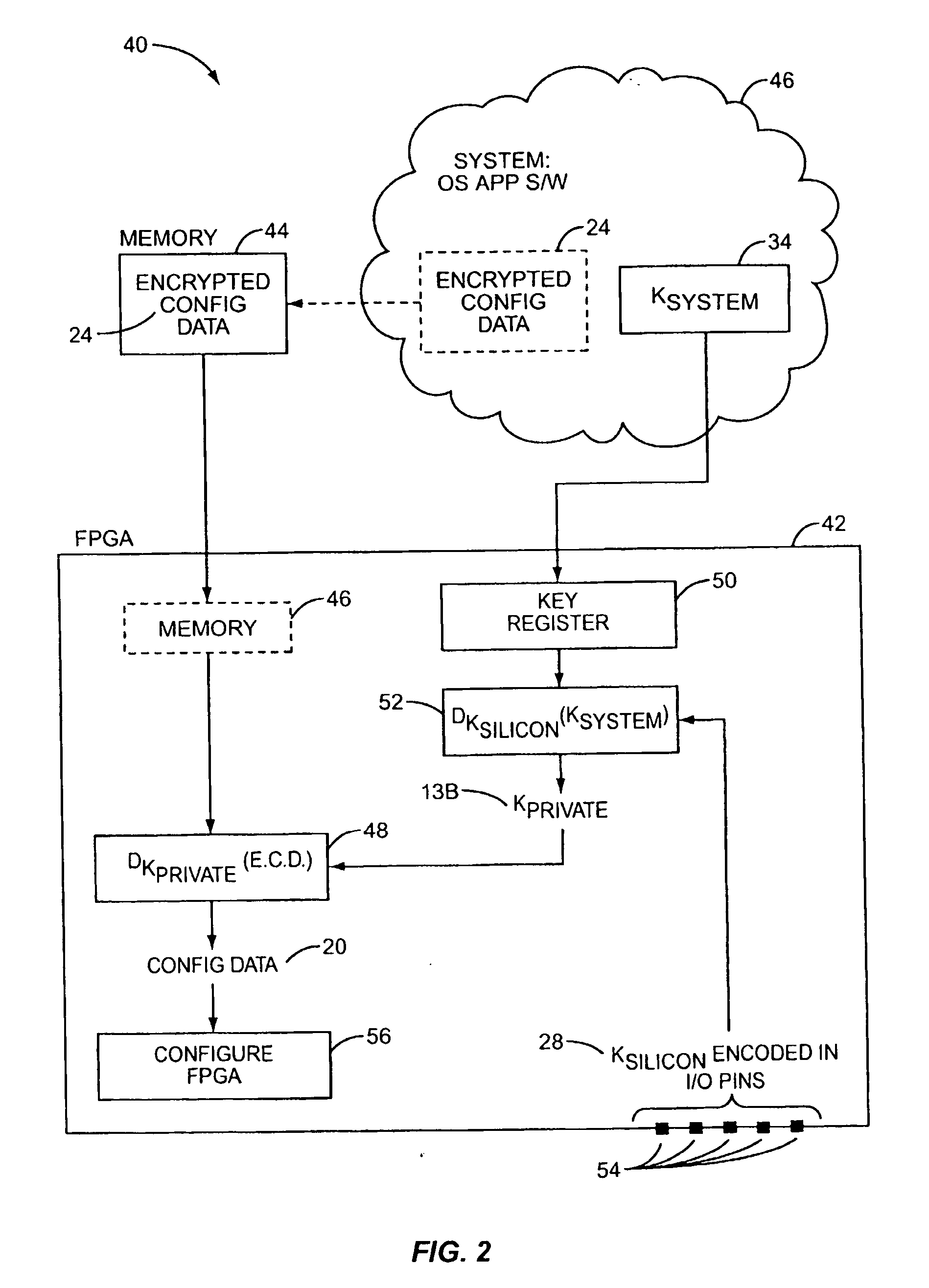Method of securing programmable logic configuration data
a technology of configuration data and programmable logic, applied in the field of securing configuration data for programmable logic, can solve the problems of compensation for the system designer, configuration data must be transferred, or downloaded, and configuration data may be copied and used to configure plds,
- Summary
- Abstract
- Description
- Claims
- Application Information
AI Technical Summary
Problems solved by technology
Method used
Image
Examples
Embodiment Construction
[0016] According to the present invention, configuration data for a Programmable Logic Device (PLD) is securely distributed to, and utilized in, field-deployed digital systems. That is, the configuration data is supplied in a format and according to a procedure that prevents the configuration data from being intercepted or copied in a usable form. This is accomplished by encrypting the configuration data prior to distribution. An associated decryption key is also encrypted, with a silicon key. The decryption key is recovered within the PLD from the system key, and the configuration data is decrypted on-board the PLD prior to its use in configuring the PLD's logic circuits and interconnect.
[0017] As used herein, the term Programmable Logic Device (PLD) refers broadly to a class of general-purpose digital circuits whose internal logical structure, interconnection, and / or pin-out—and hence the circuit's logic function—are specified by system designers in the form of configuration data...
PUM
 Login to View More
Login to View More Abstract
Description
Claims
Application Information
 Login to View More
Login to View More - R&D
- Intellectual Property
- Life Sciences
- Materials
- Tech Scout
- Unparalleled Data Quality
- Higher Quality Content
- 60% Fewer Hallucinations
Browse by: Latest US Patents, China's latest patents, Technical Efficacy Thesaurus, Application Domain, Technology Topic, Popular Technical Reports.
© 2025 PatSnap. All rights reserved.Legal|Privacy policy|Modern Slavery Act Transparency Statement|Sitemap|About US| Contact US: help@patsnap.com



